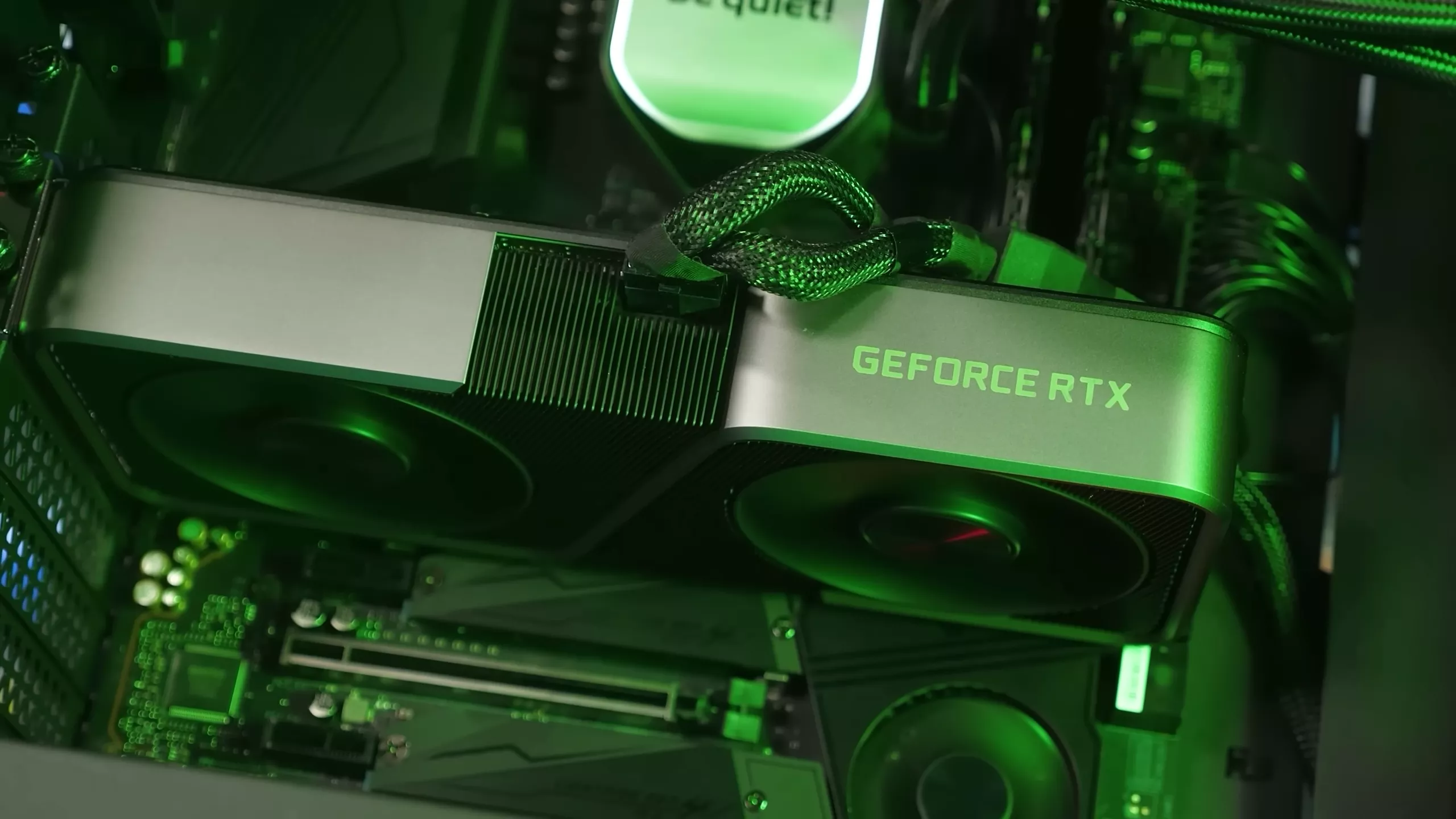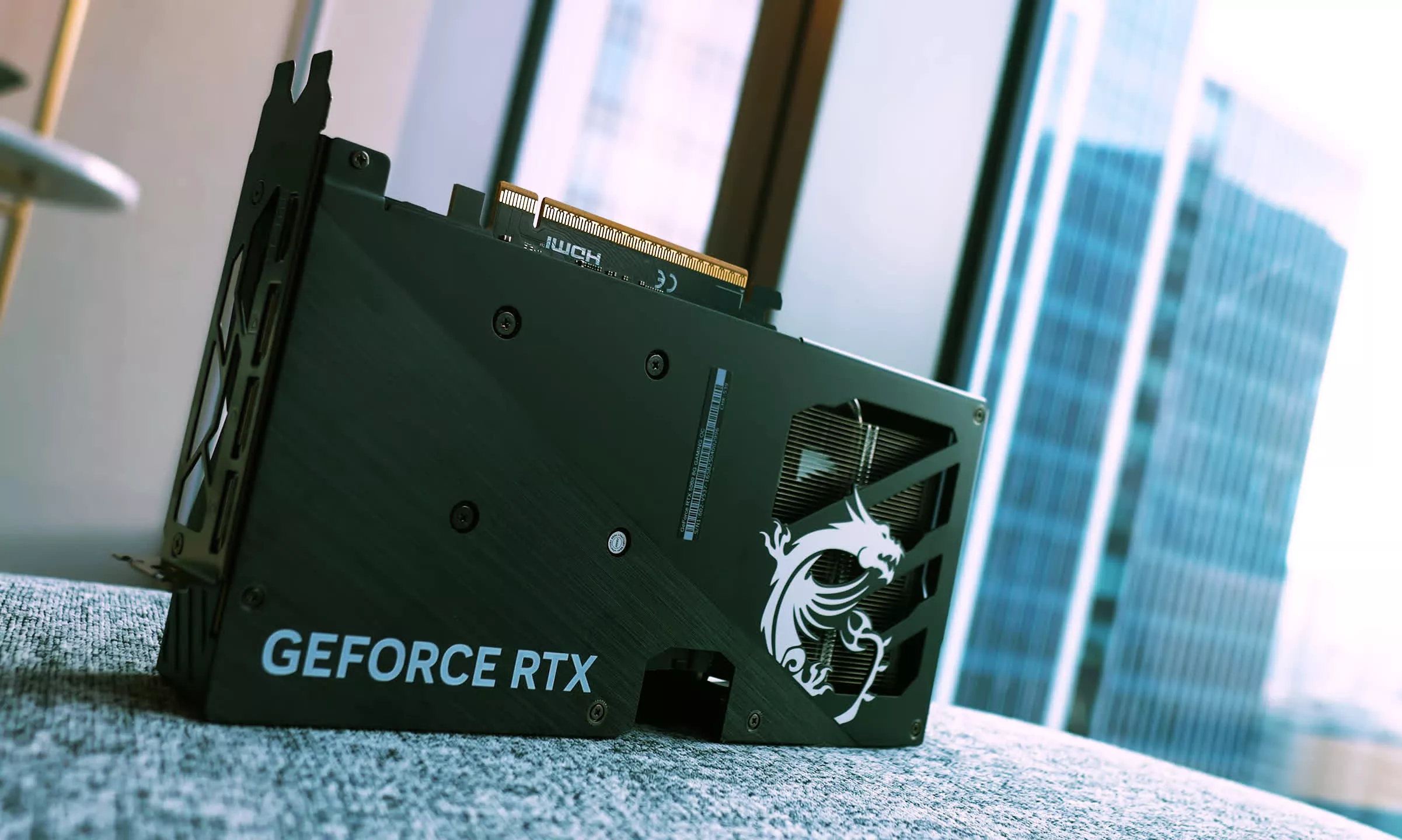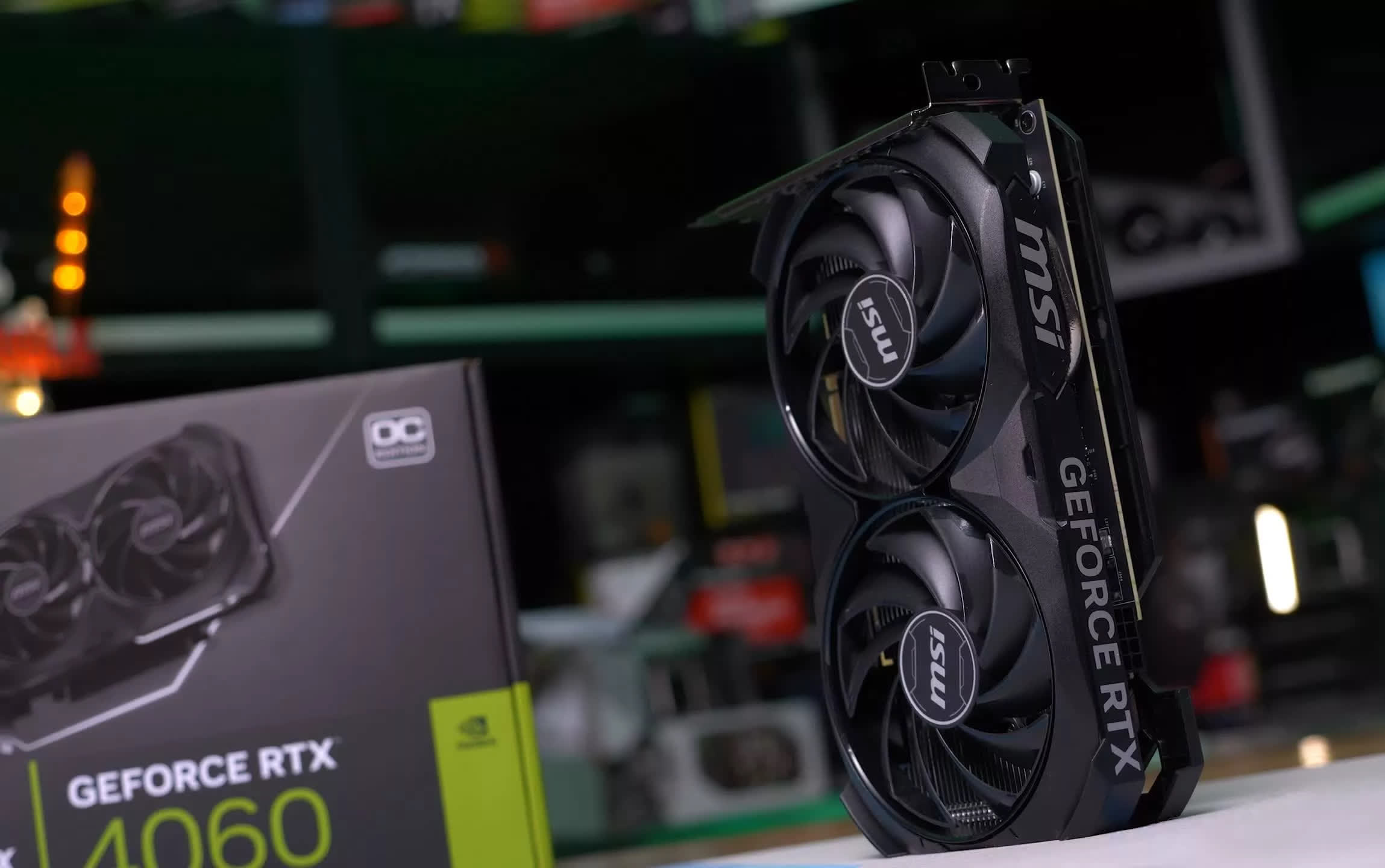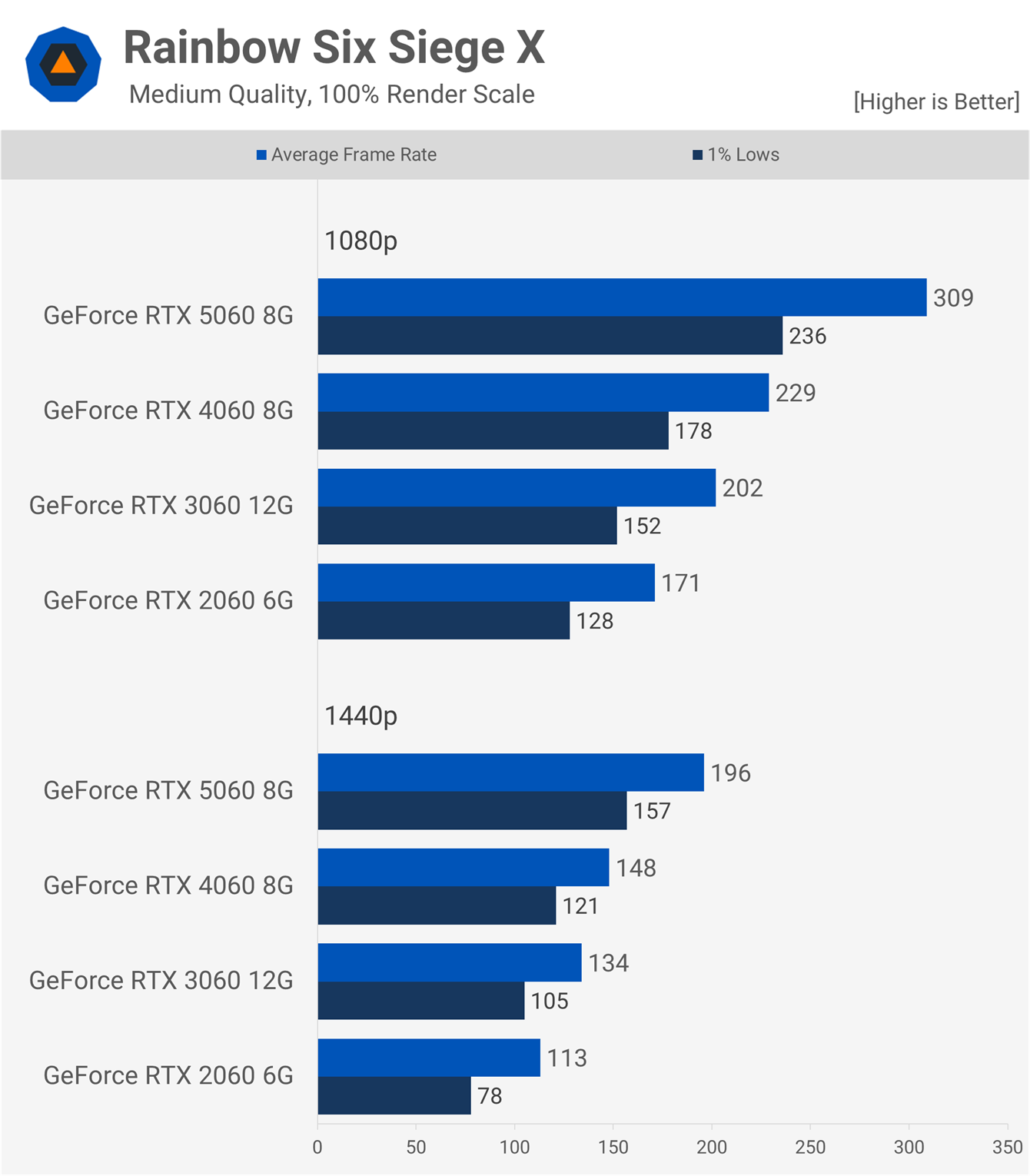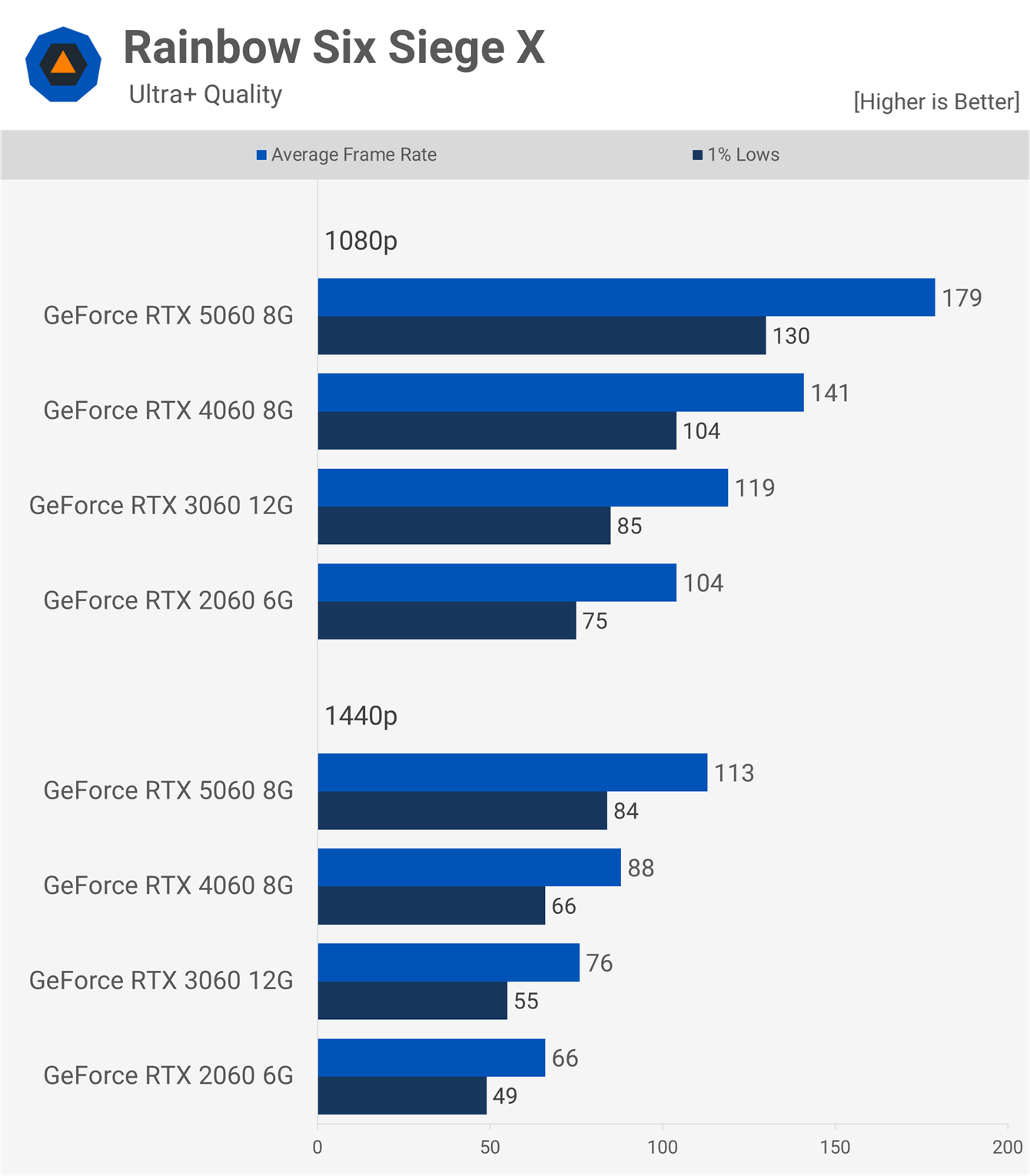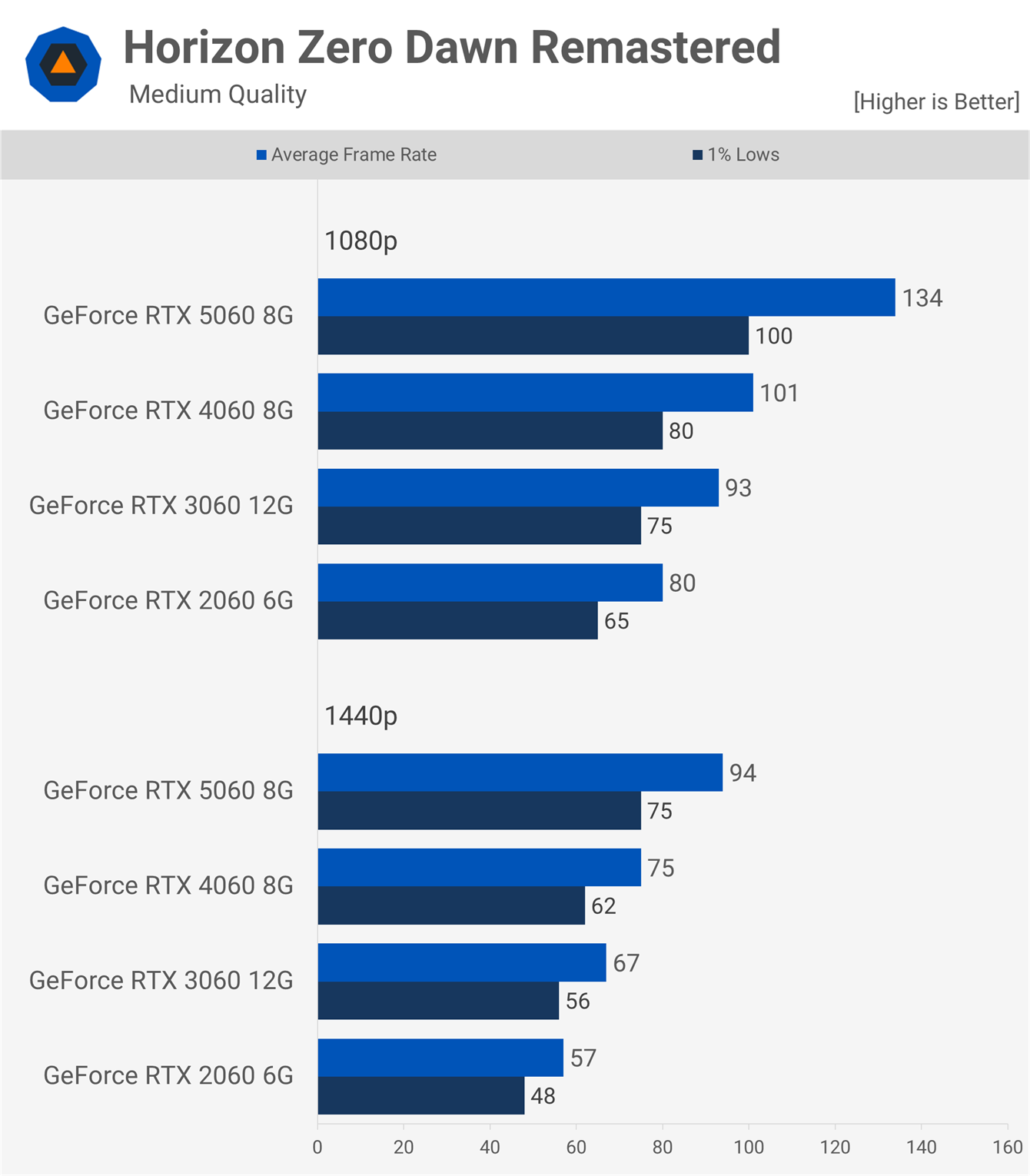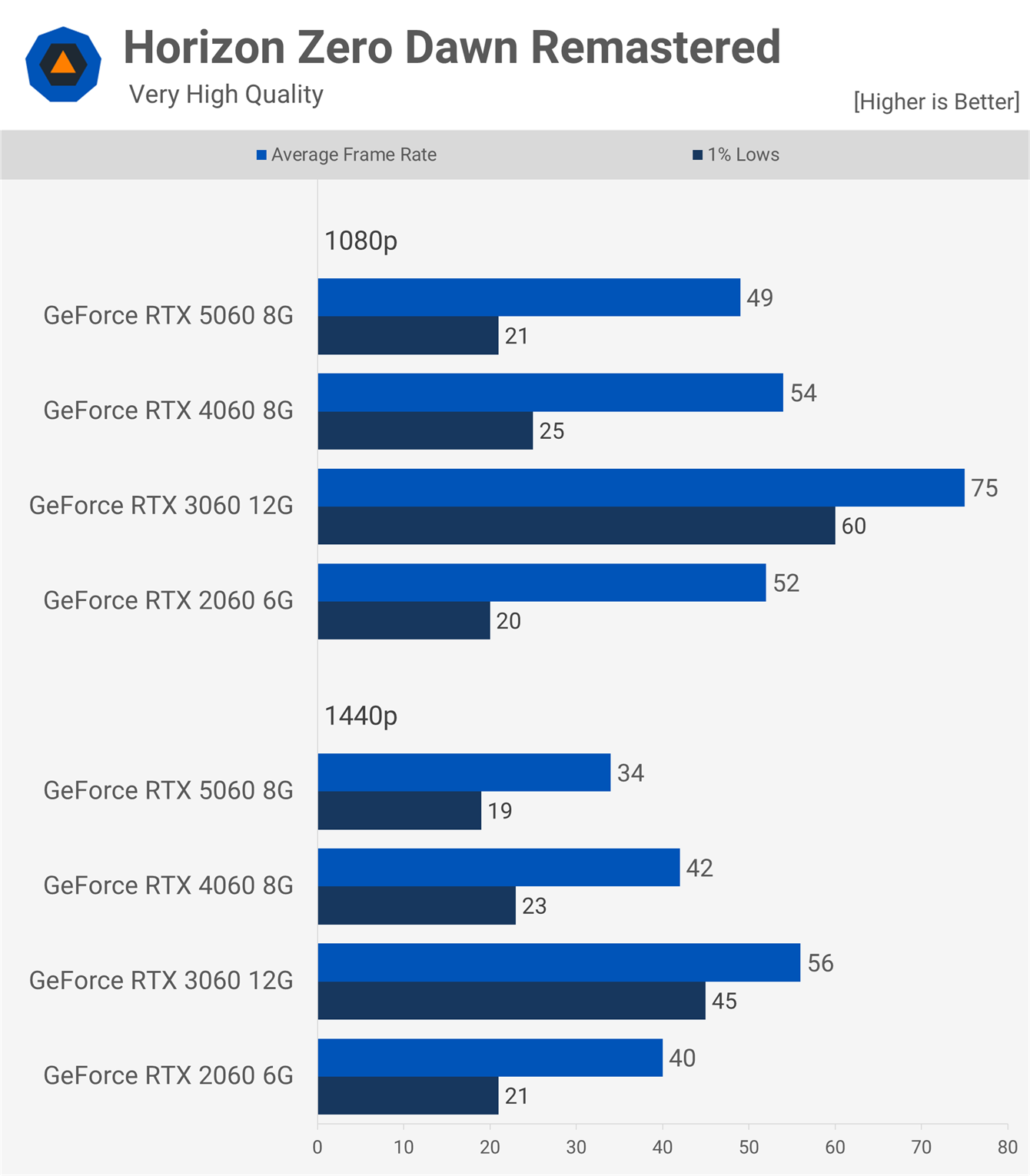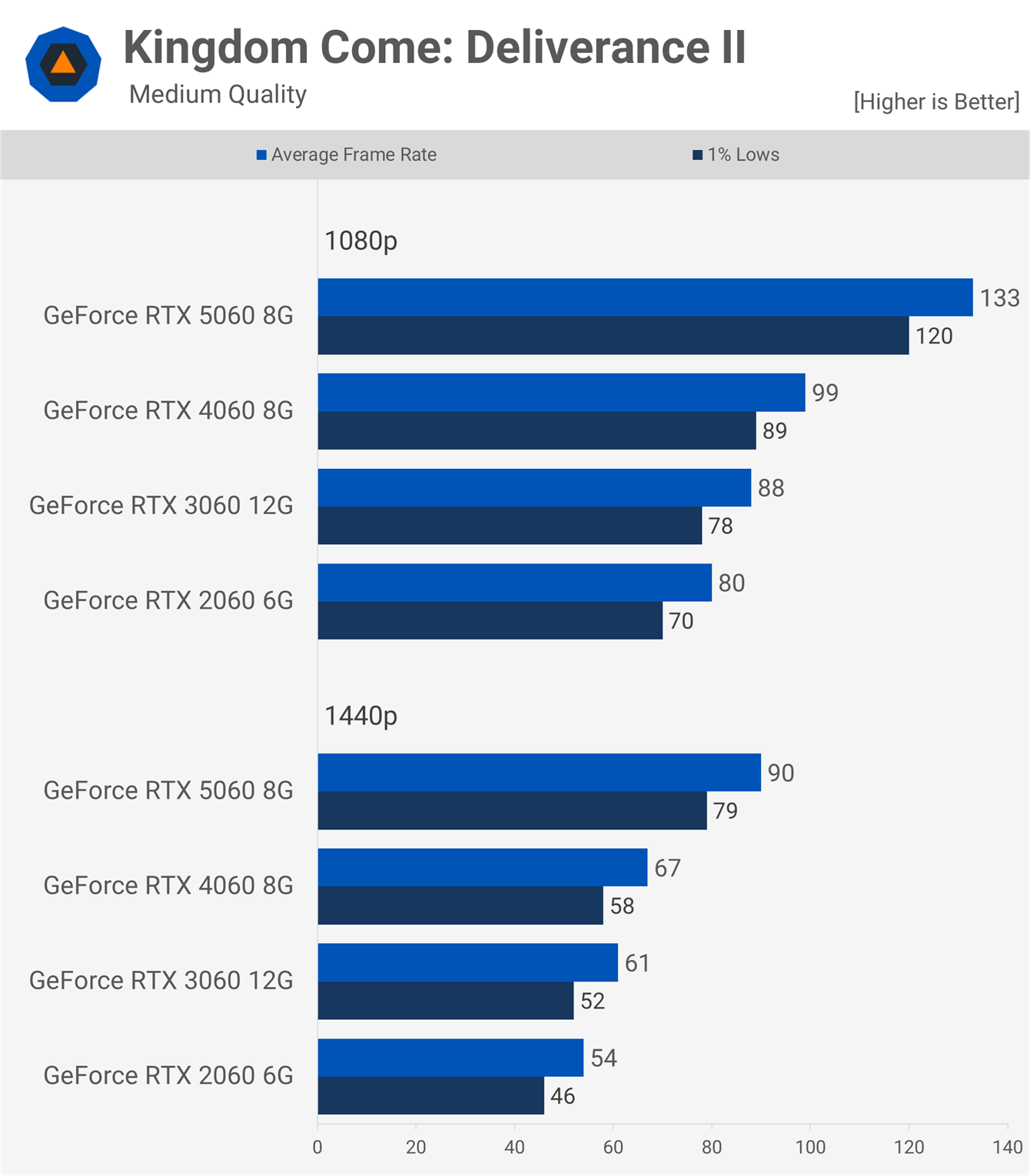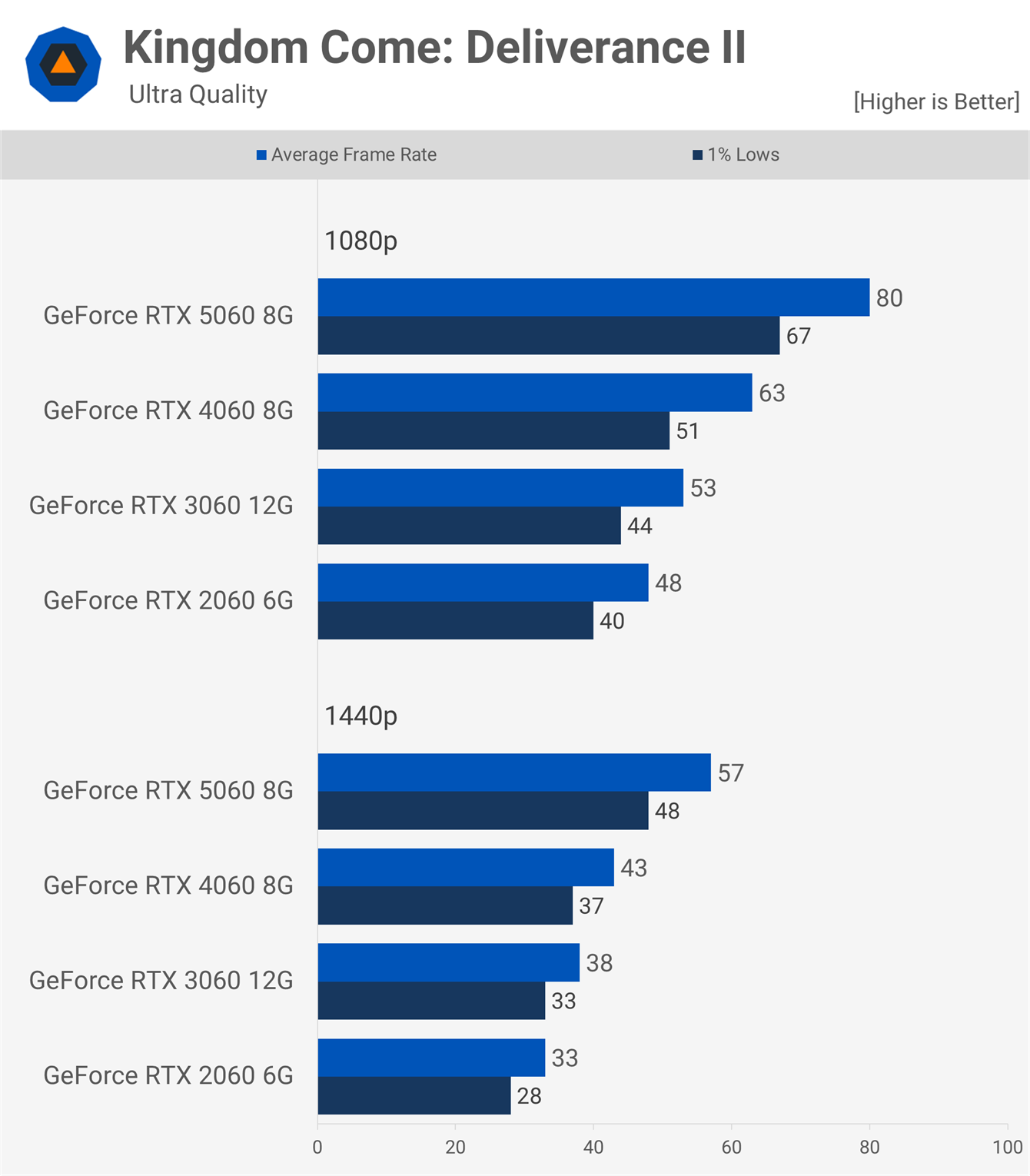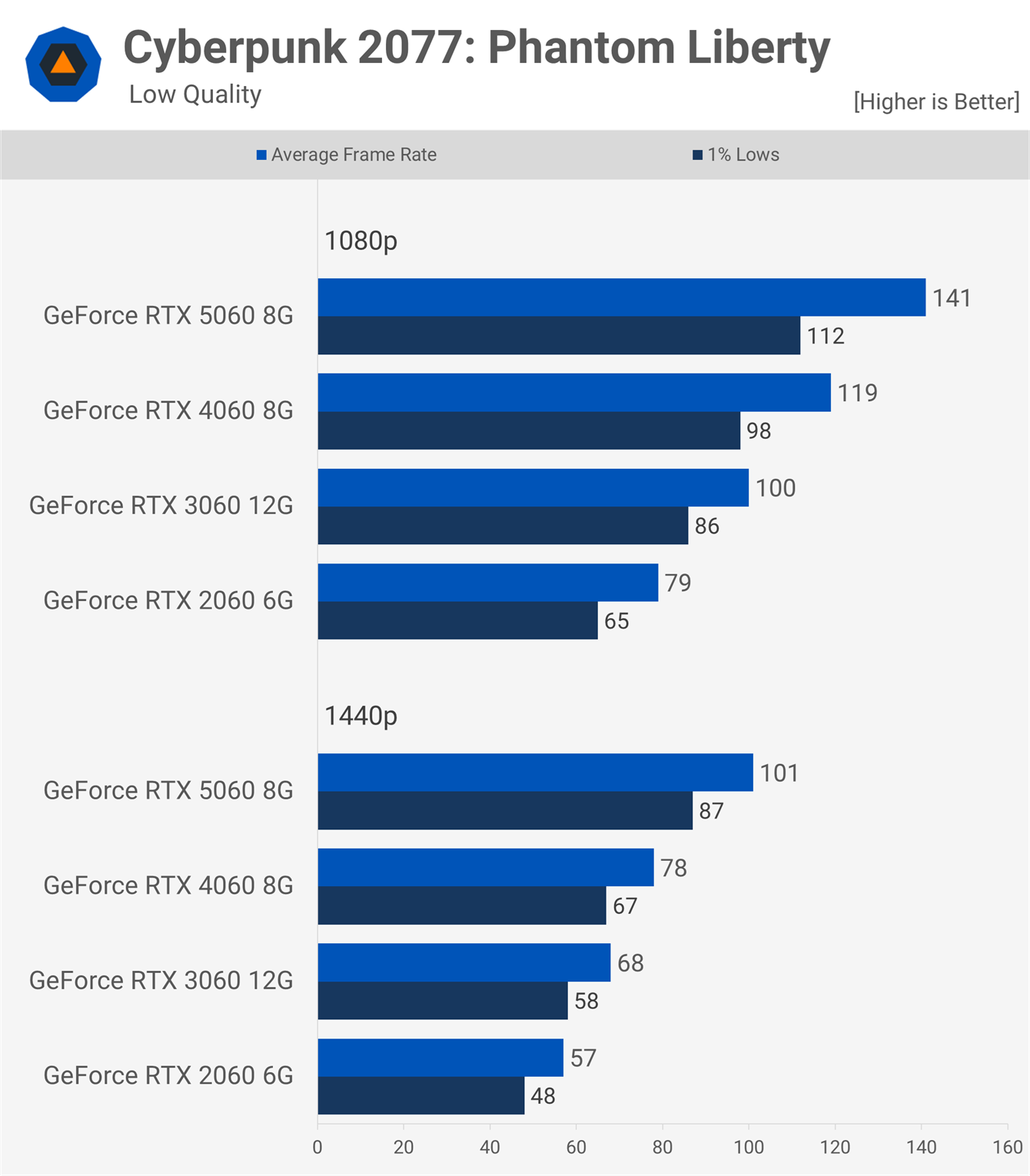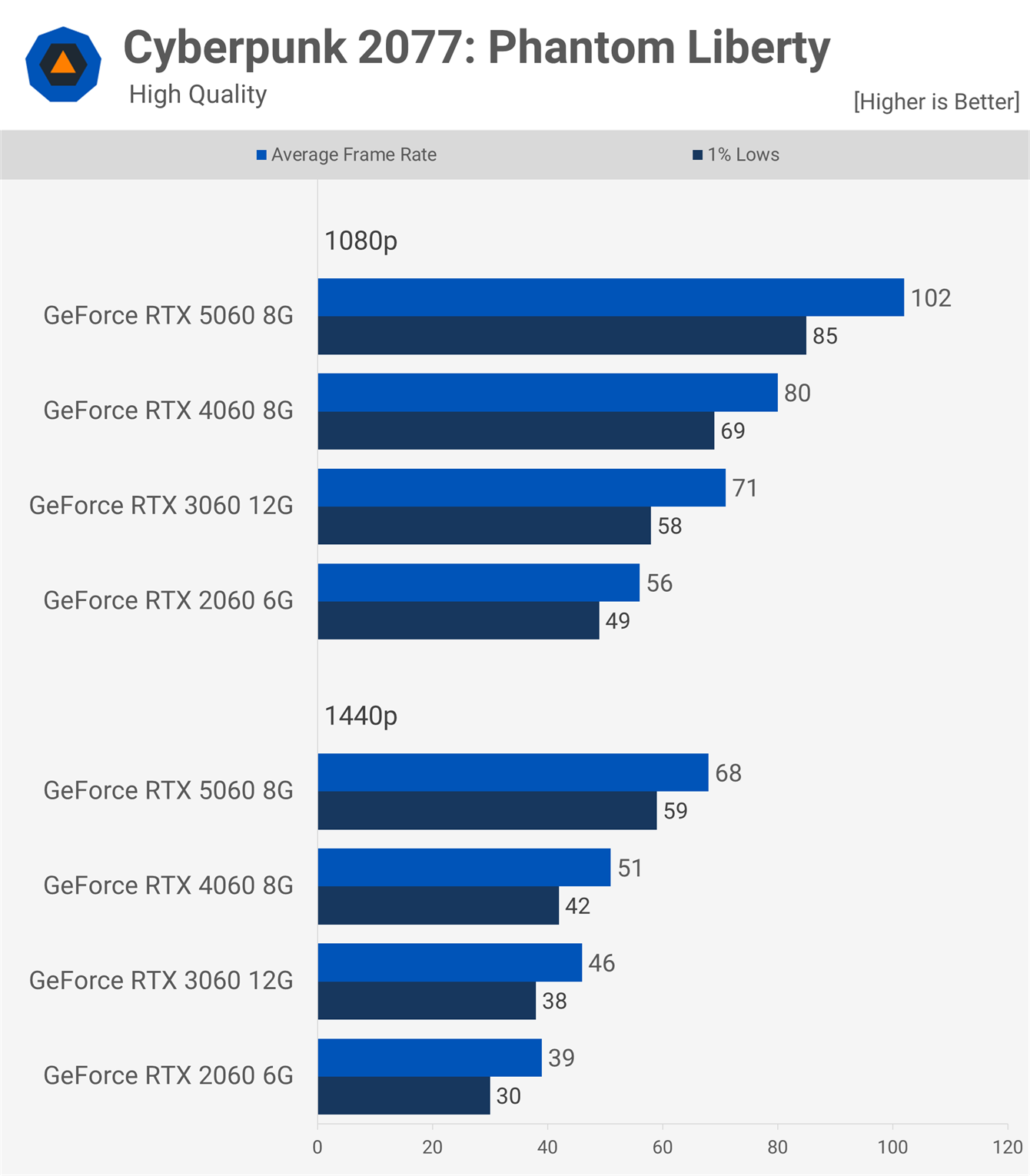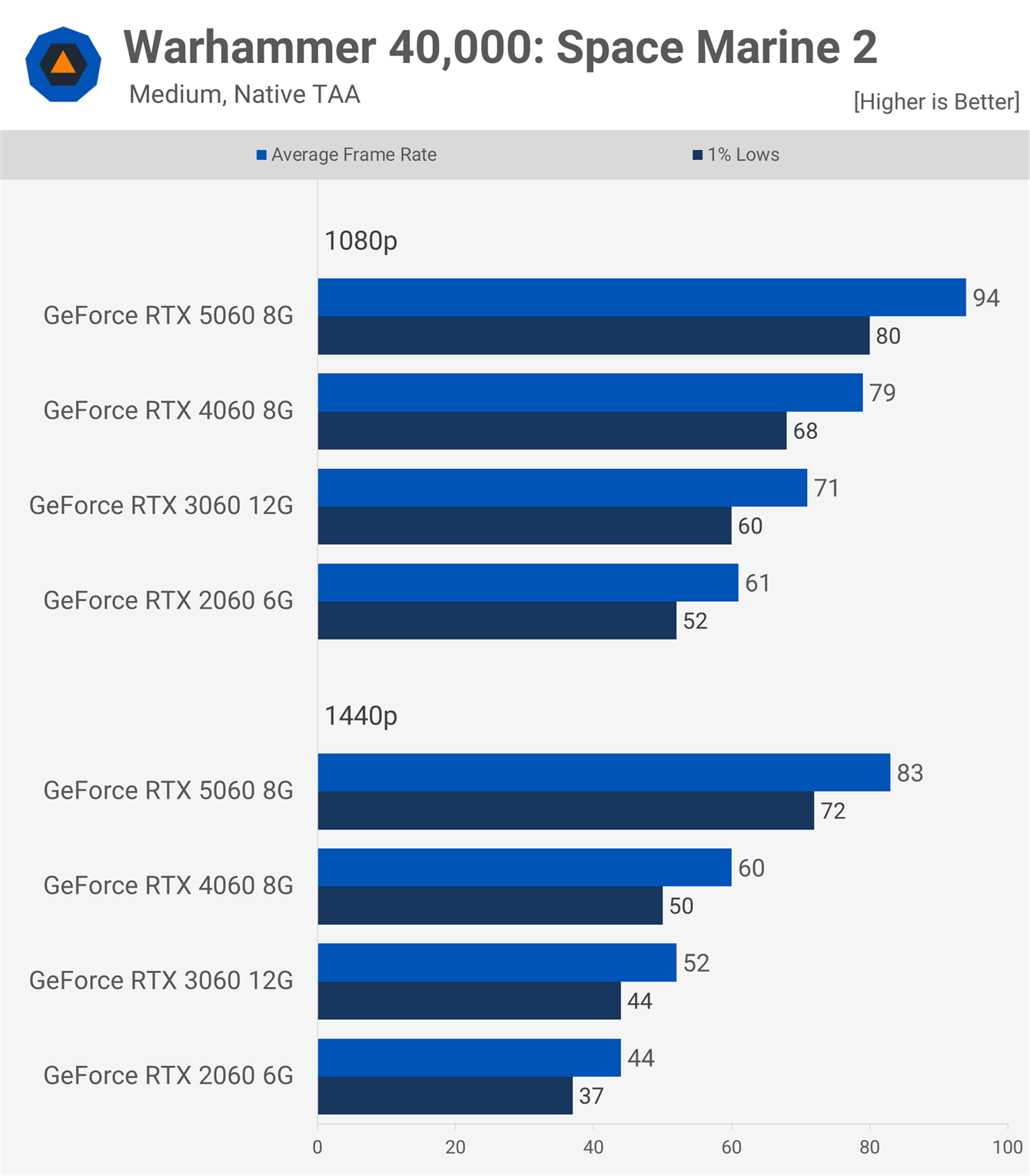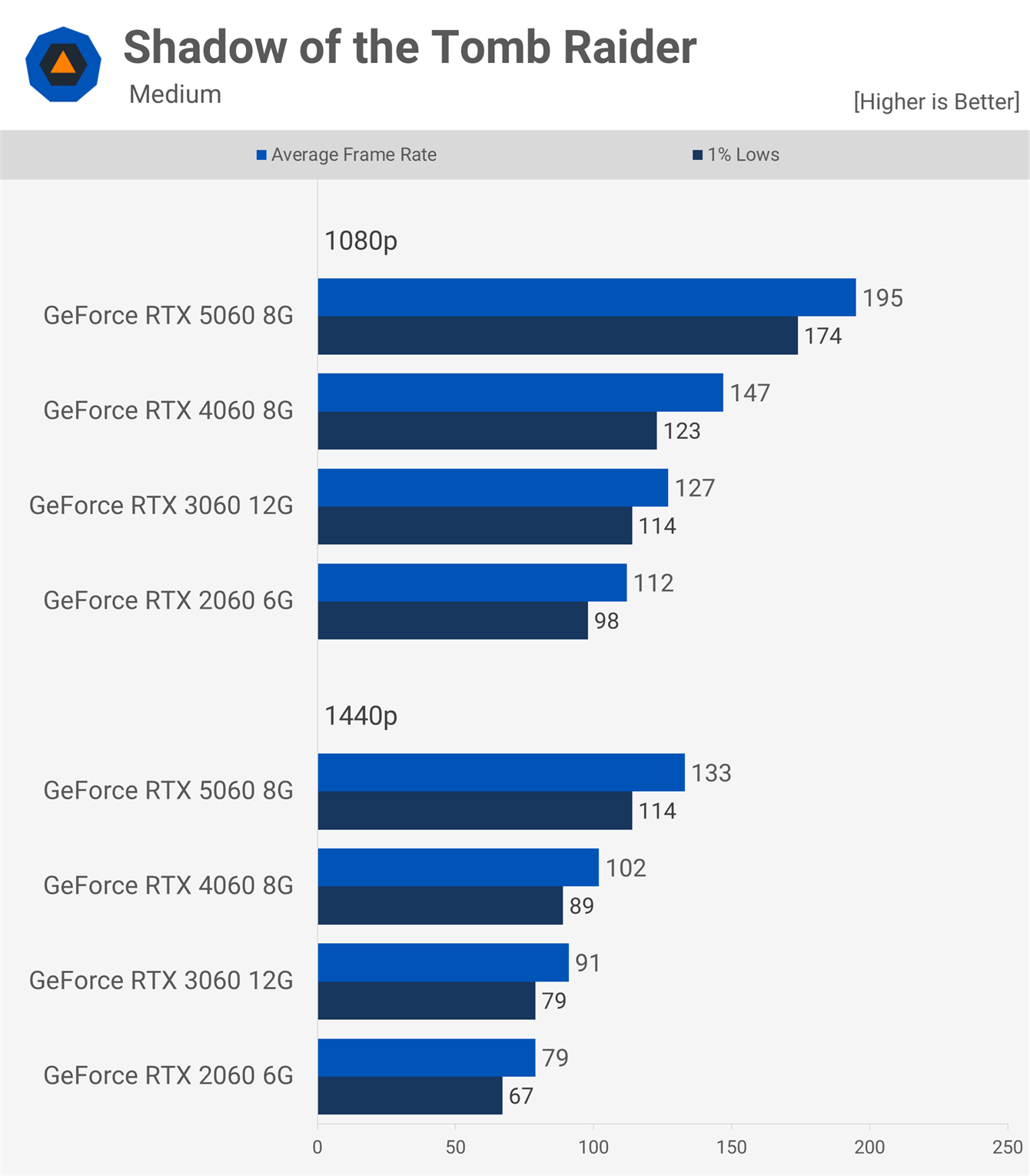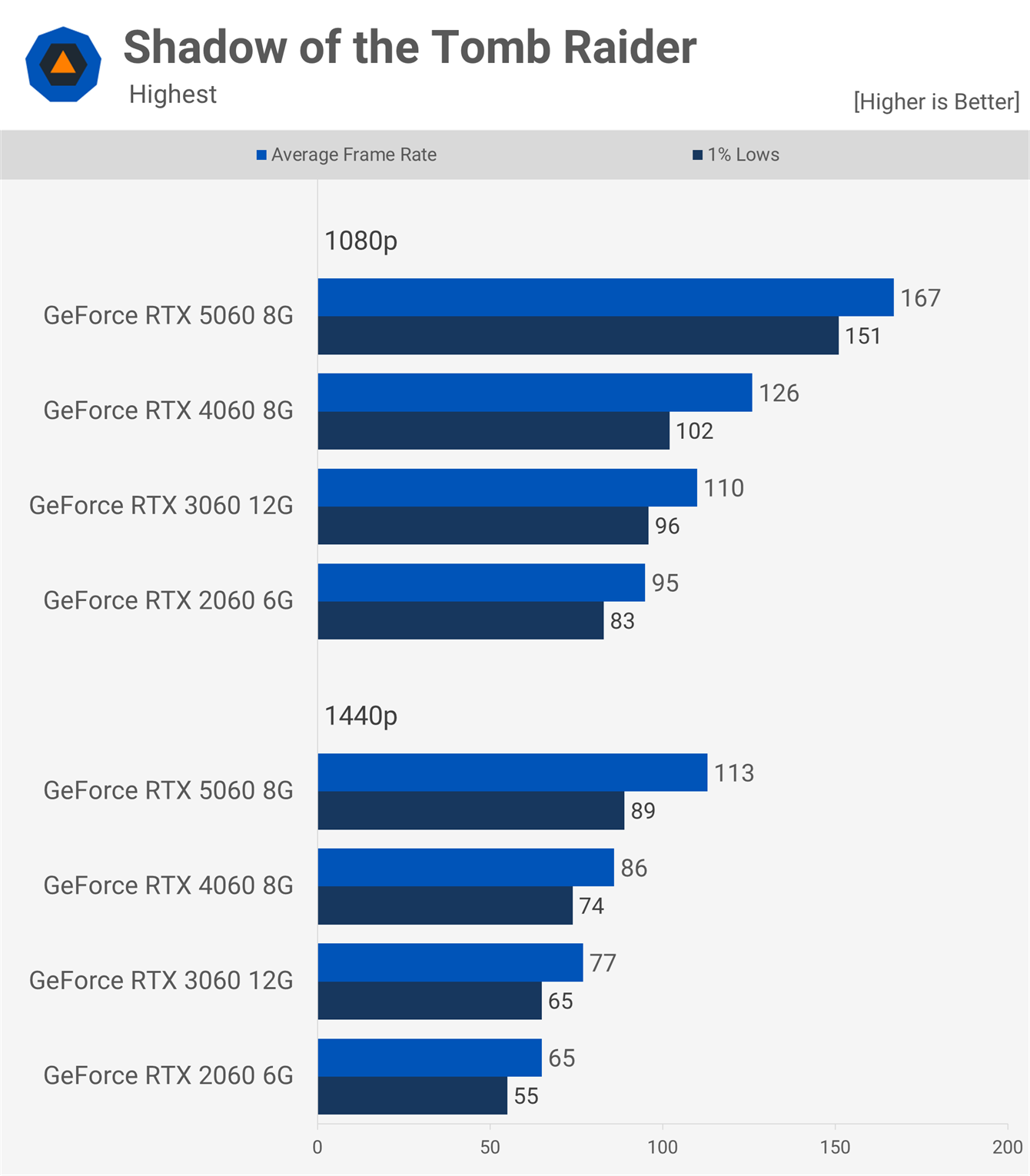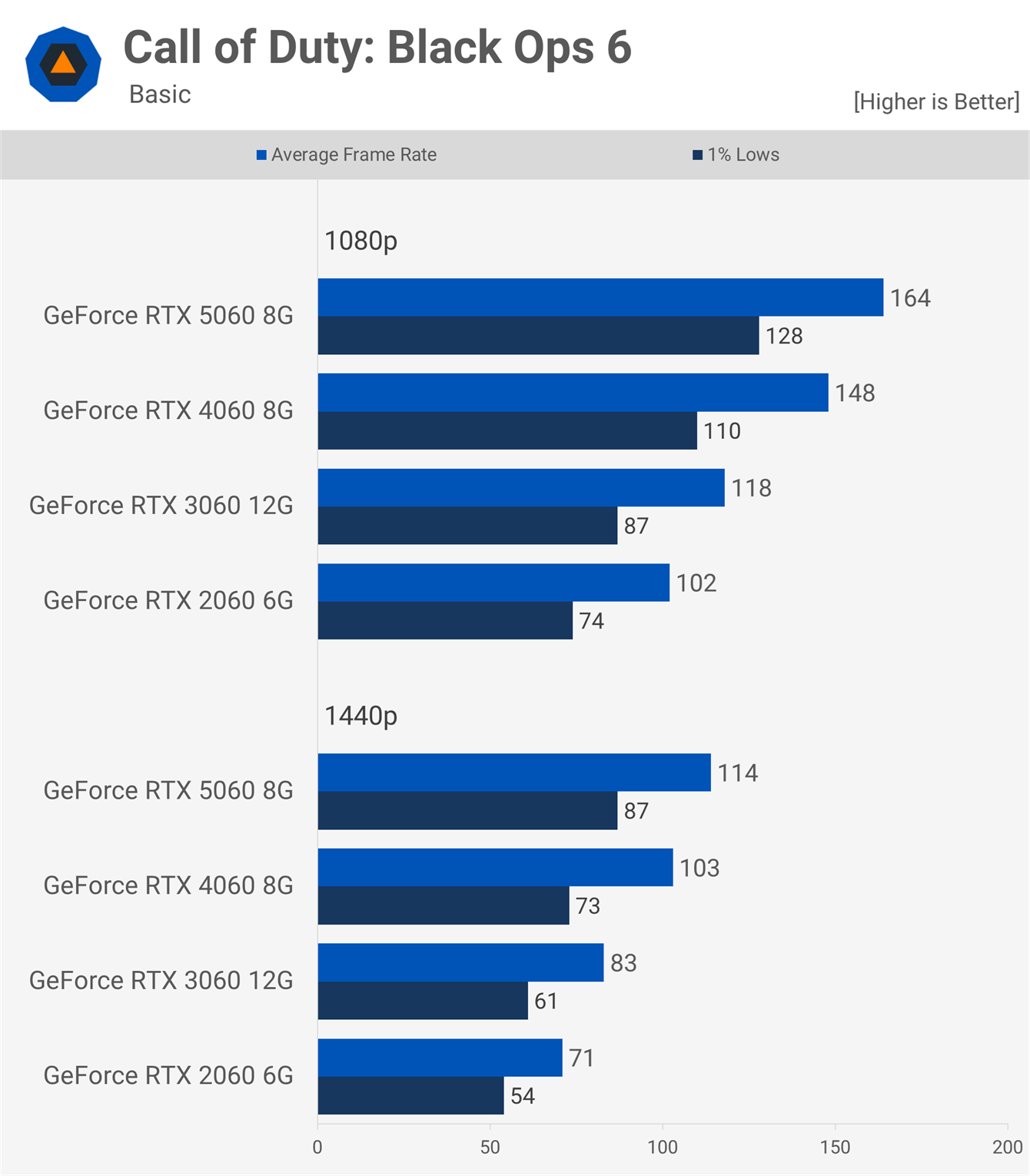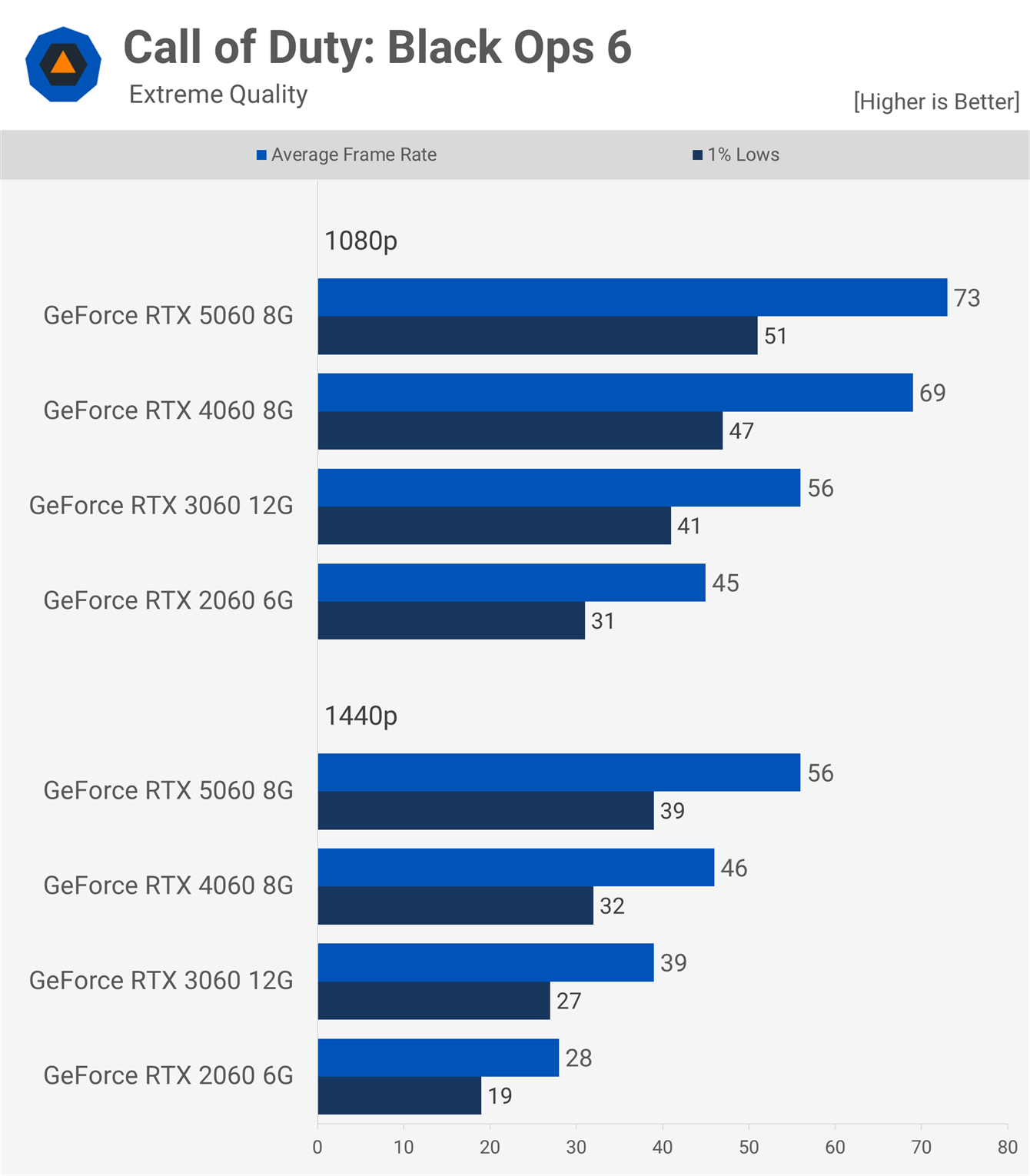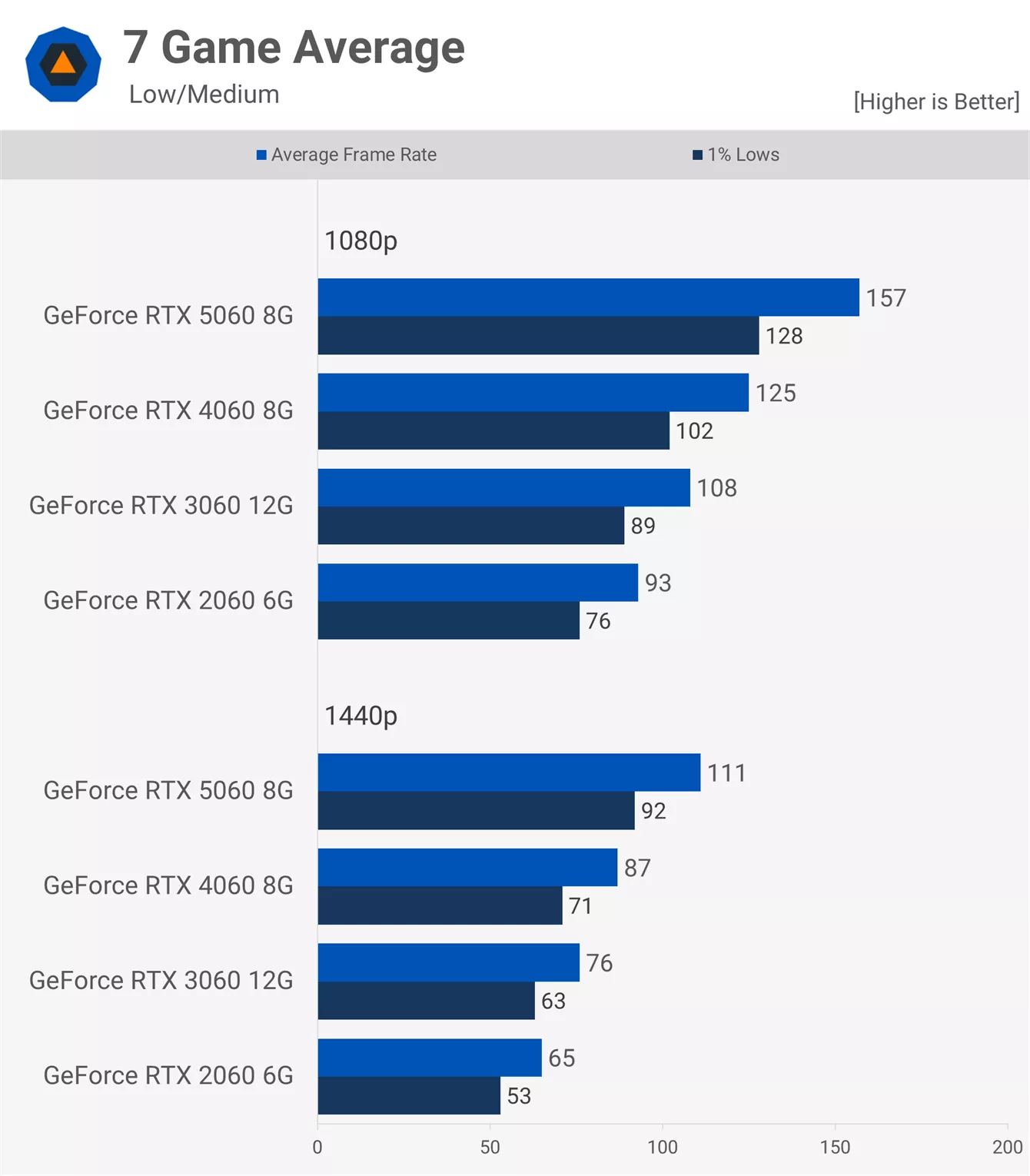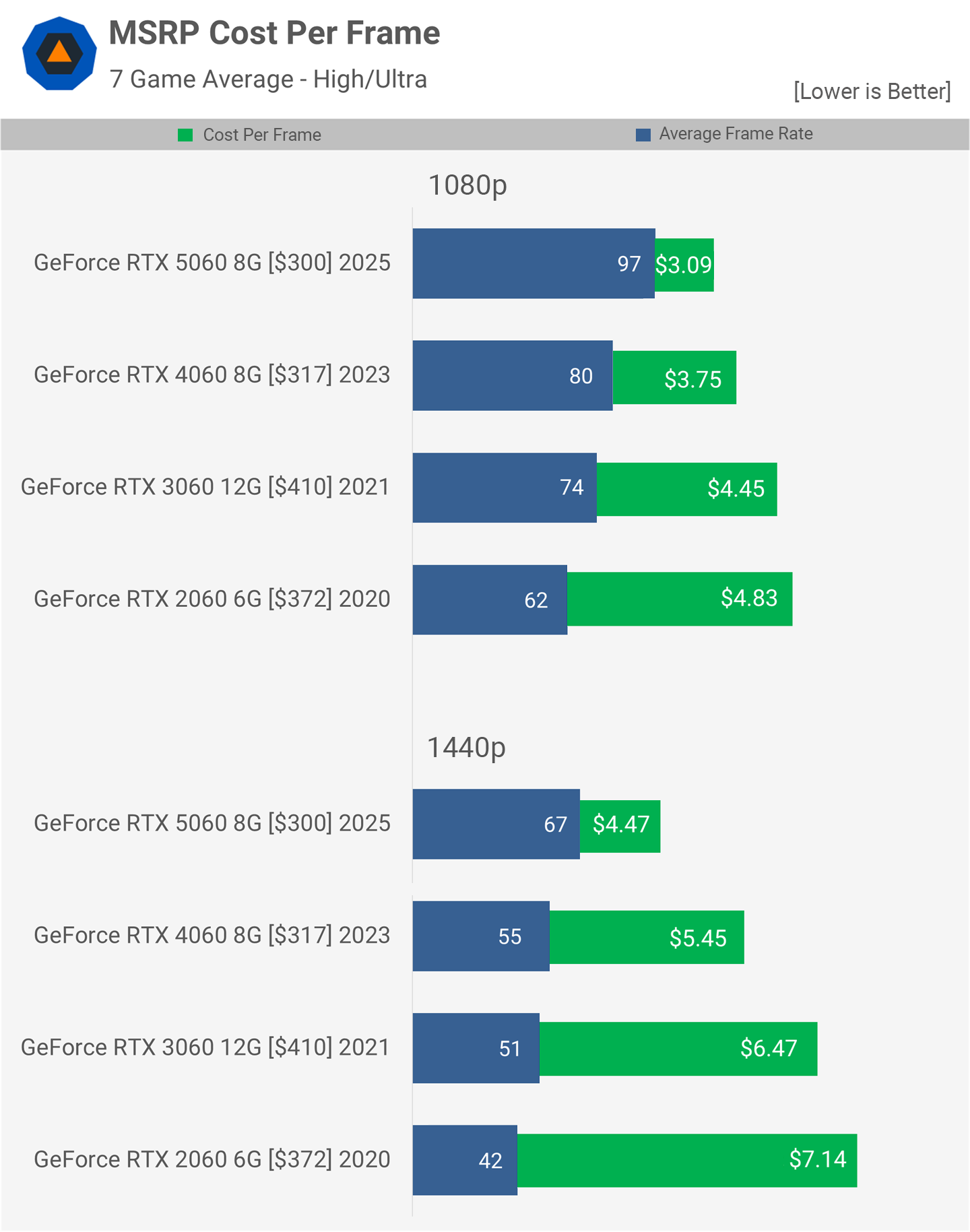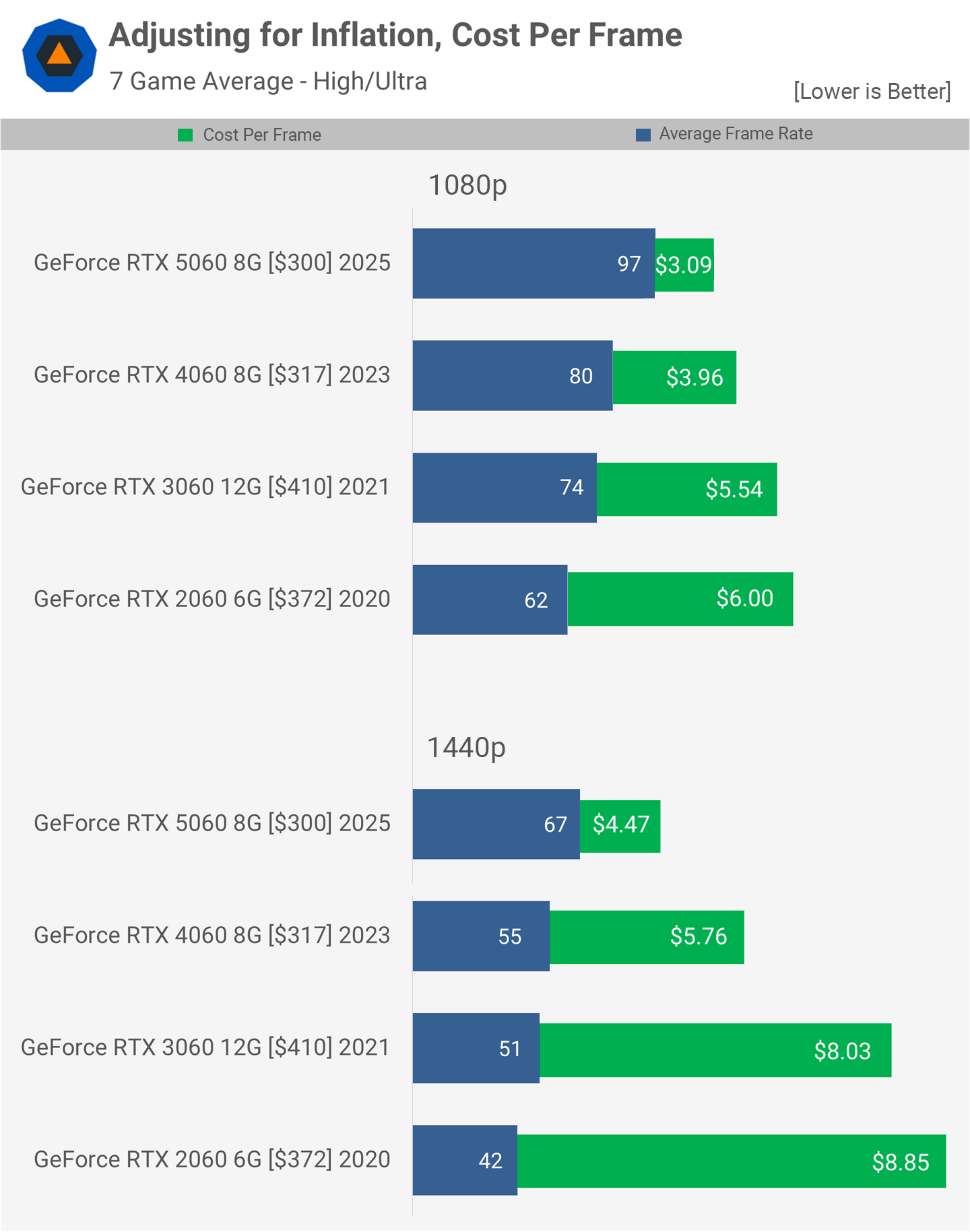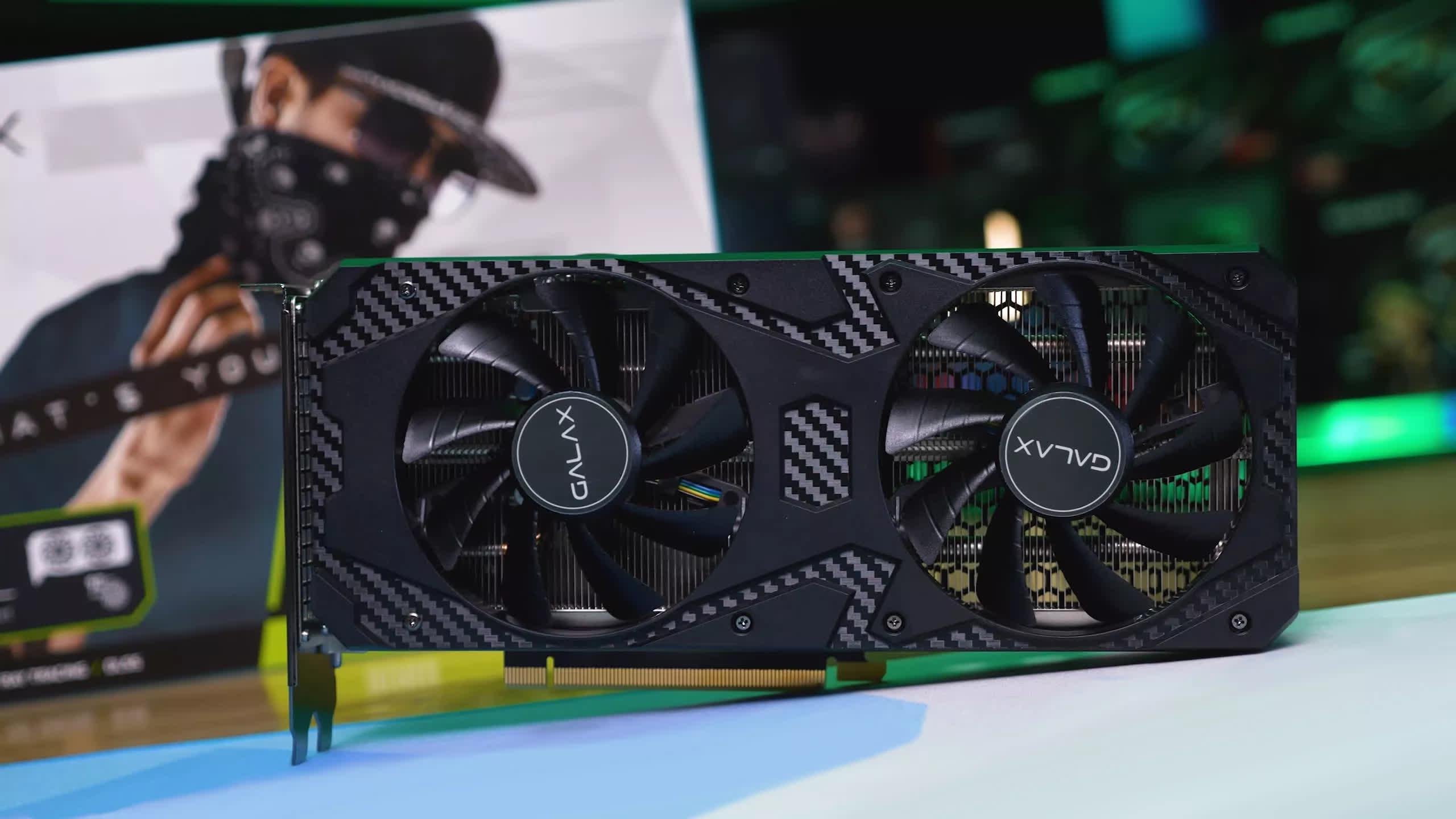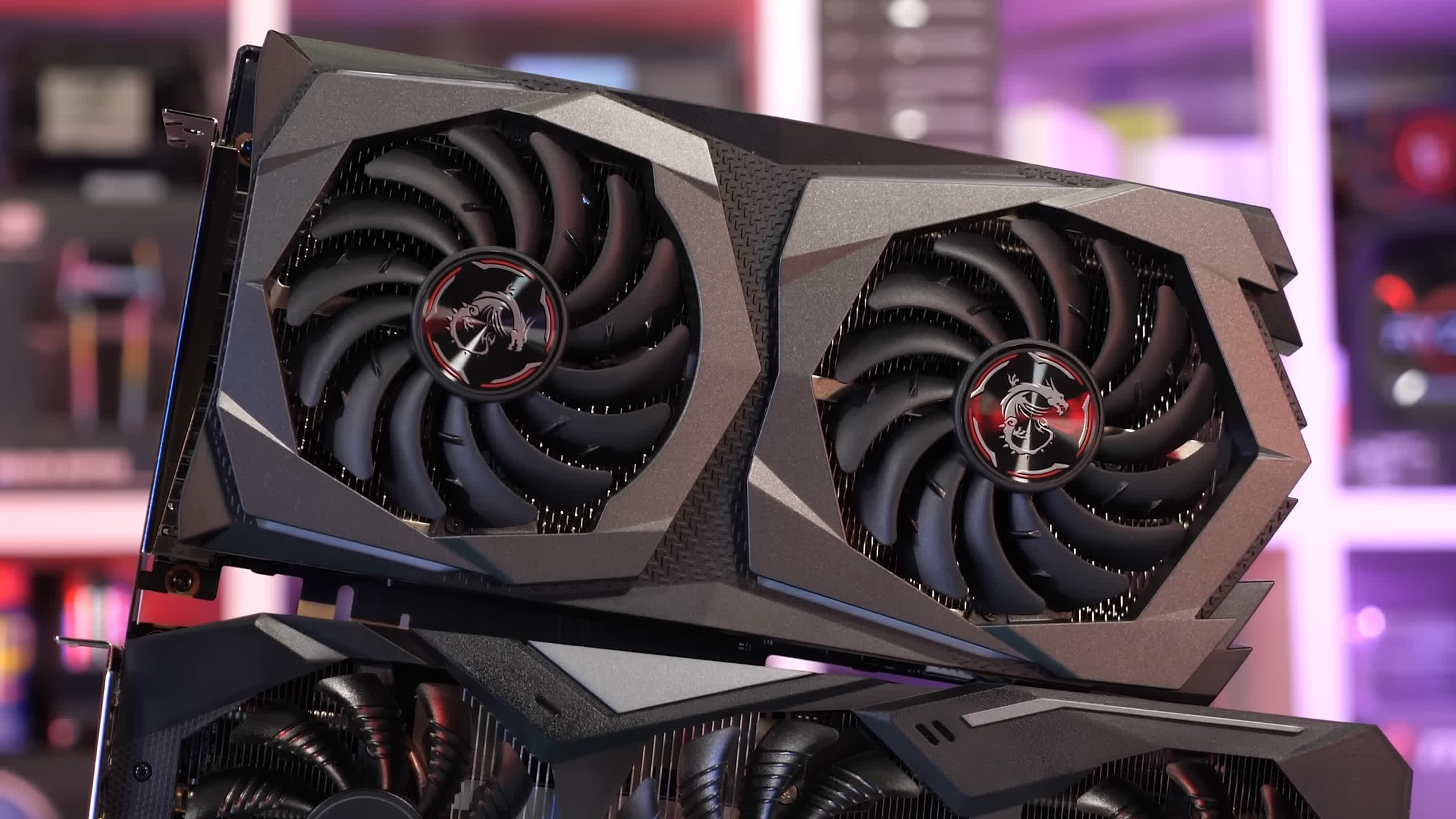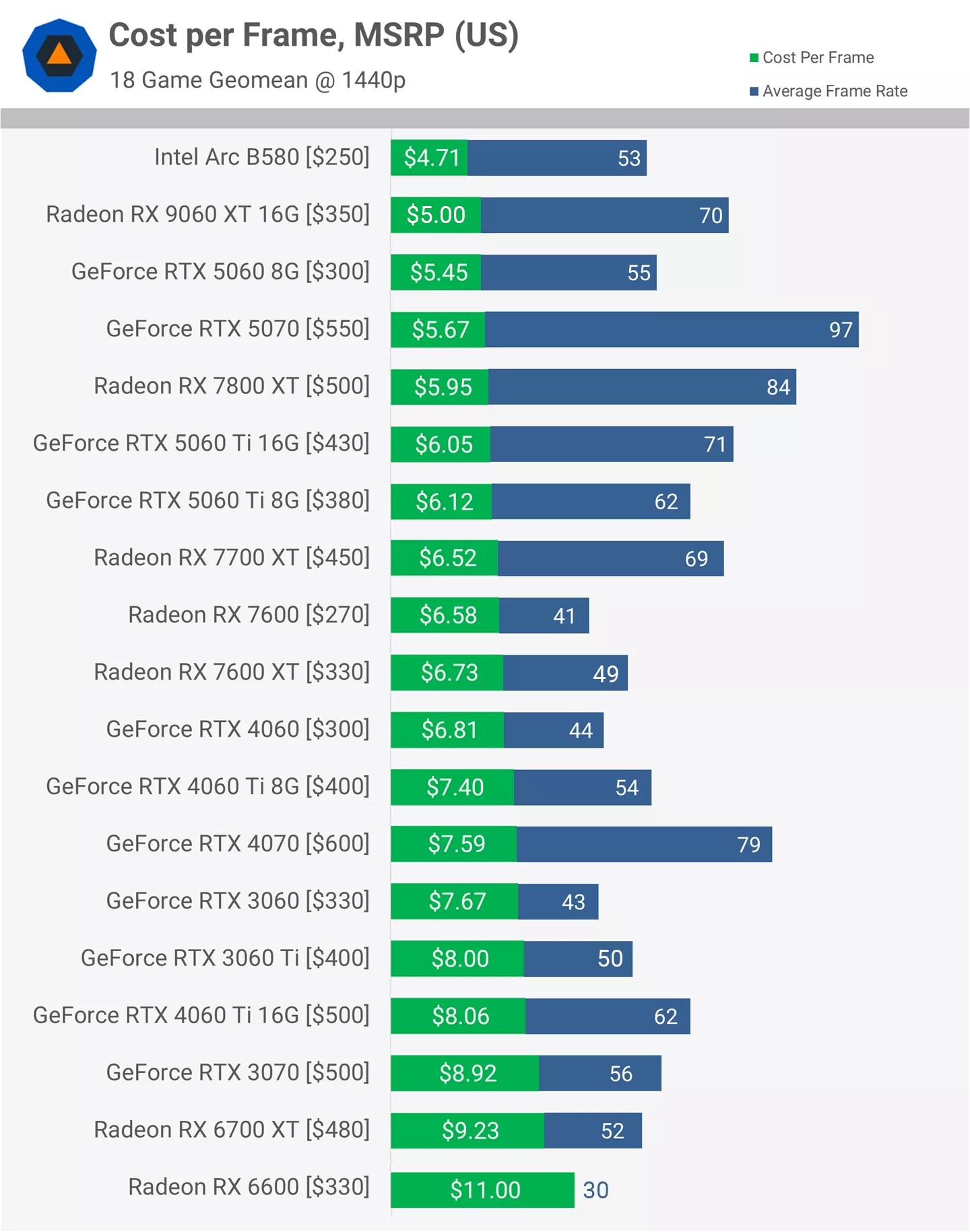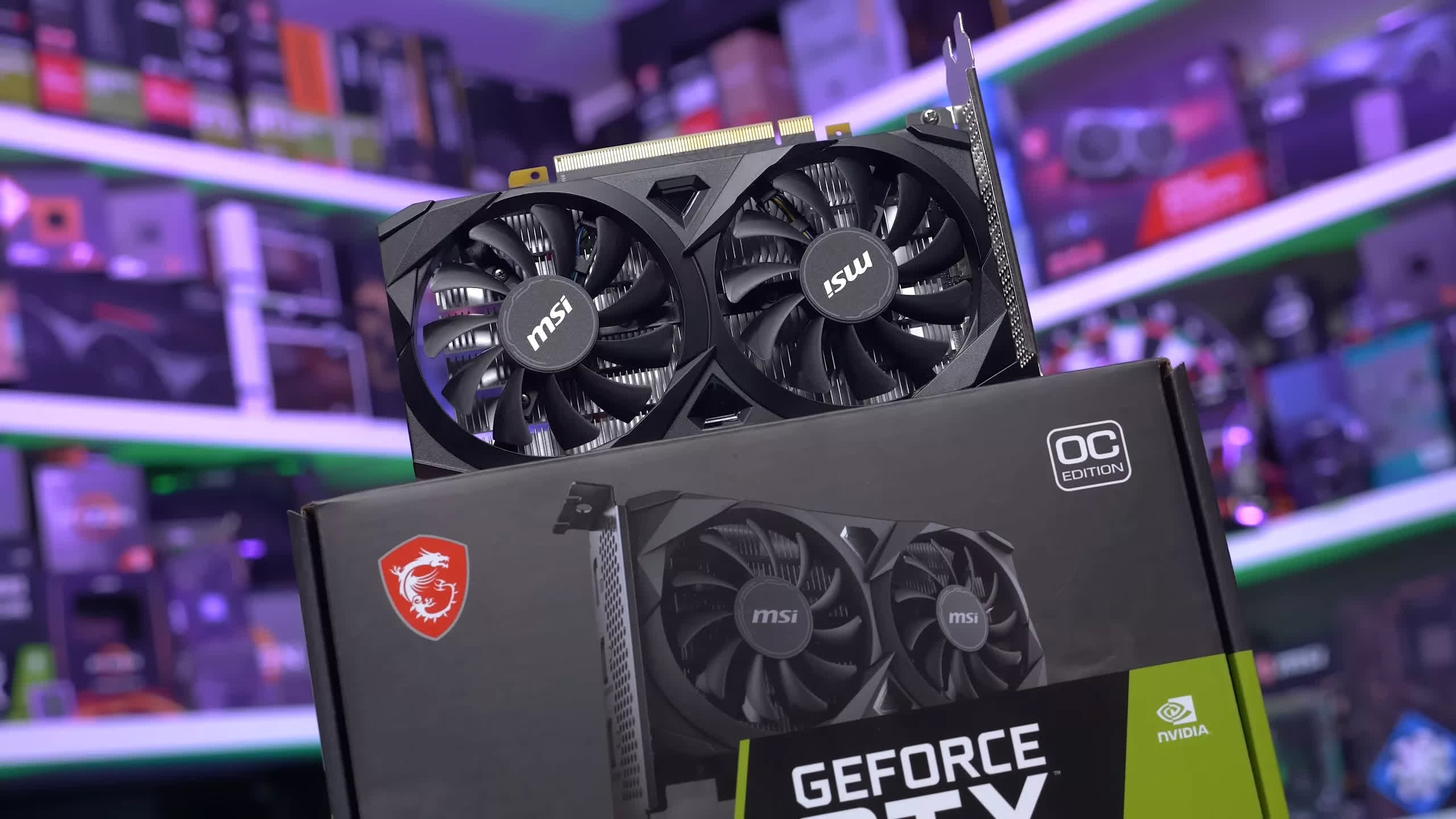When Nvidia launched the GeForce RTX 5060, they made one thing clear: they didn't want reviewers getting too close too soon. By holding back GPU drivers until after the product was already on shelves, the company effectively prevented any meaningful day-one analysis. To make matters even more convenient for themselves, the release was timed to land during Computex, when most of the tech press was busy scrambling between press briefings and prototype demos in Taipei.
It was a solid plan, but we weren't about to let that slide. So we packed up a test system, took our RTX 5060 sample to Taiwan, and waited for the driver drop. It came. We benchmarked. And thankfully, we were successful.
We reviewed the RTX 5060, and it left us with mixed feelings. Overall performance was actually quite good, as long as everything fit within what is becoming an increasingly limited 8 GB VRAM buffer. For a $300 graphics card, that limitation isn't a dealbreaker (as we see it on the more expensive 5060 Ti) – but it's not something you can ignore either.
| GeForce RTX 5060 |
GeForce RTX 4060 |
GeForce RTX 3060 |
GeForce RTX 2060 |
|
|---|---|---|---|---|
| Price MSRP | $300 | $300 | $329 | $349 |
| Release Date | May 2025 | Jun 2023 | Feb 2021 | Jan 2019 |
| Process | TSMC 4N | Samsung 8nm | TSMC 12nm | |
| Die Size (mm2) | 181 mm² | 158.7 mm² | 276 mm² | 445 mm² |
| Core Config | 3840:120:48 | 3072:96:48 | 3584:112:48 | 1920:120:48 |
| L2 Cache (MB) | 32 MB | 24 MB | 3 MB | 3 MB |
| GPU Boost Clock | 2497 MHz | 2460 MHz | 1777 MHz | 1680 MHz |
| Memory Capacity | 8GB | 8GB | 12GB | 6GB |
| Memory Speed | 28 Gbps | 17 Gbps | 15 Gbps | 14 Gbps |
| Memory Type | GDDR7 | GDDR6 | GDDR6 | GDDR6 |
| Bus Type / Bandwidth |
128-bit, 448 GB/s |
128-bit, 272 GB/s |
192-bit, 360 GB/s |
192-bit, 336 GB/s |
| PCIe Bus Interface | PCIe 5.0 x8 | PCIe 4.0 x8 | PCIe 4.0 x16 | PCIe 3.0 x16 |
| Total Board Power | 145 W | 115 W | 170 W | 160 W |
Now, the bigger issue is that we were largely comparing the performance of the new RTX 5060 with its predecessor, the RTX 4060, which also shipped with just 8 GB of VRAM and underwhelmed on nearly every front. Compared to that, the RTX 5060 looks better – but only because the bar was so low to begin with. And with the RTX 3060 also struggling to impress, the trend is starting to look like strategy.
So, what exactly has Nvidia delivered over the past six years?
To answer that, we've pitted four generations of Nvidia's mainstream 60-class GPUs – the RTX 2060, 3060, 4060, and the new 5060 – against one another in a battery of games, tested at both 1080p and 1440p, using two visual presets to get a clear picture of where things stand.
Let's get into the results…
Benchmarks
Rainbow Six Siege X
Starting with Rainbow Six Siege using the medium settings, we see that the RTX 3060 offered an 18% performance boost over the 2060 at 1080p and 19% at 1440p. Not exceptional, but decent.
The RTX 4060 followed, offering just 10 to 13% better performance than the 3060, depending on resolution, which we found to be a very disappointing improvement. Most recently, we tested the RTX 5060, which is actually quite impressive – ignoring the obvious VRAM limitation, though VRAM is not an issue in this title.
As a result, we observed over a 30% increase in performance: 35% at 1080p and 32% at 1440p. That's a significant generational upgrade.
It also means that if you've been holding onto an RTX 3060, you're now looking at over 50% more performance in this title with the RTX 5060. However, there is a trade-off, as the 5060 has 33% less VRAM, which is not ideal, and that limitation will become more apparent shortly.
When increasing the quality preset from Medium to Ultra+, we still don't encounter any VRAM-related issues, so the scaling remains similar. At 1440p, the 3060 is 15% faster than the 2060, the 4060 is 16% faster than the 3060, and the 5060 is 28% faster than the 4060.
Horizon Zero Dawn Remastered
Next up is Horizon Zero Dawn Remastered. Starting with the medium preset, the RTX 3060 is 16 to 18% faster than the 2060, while the 4060 is just 9 to 12% faster than the 3060, which helps explain why the 4060 felt like such a letdown. The 5060, on the other hand, was 25% faster at 1440p and an impressive 33% faster at 1080p, making it one of the strongest 60-series performers in recent years – at least it would be, if not for the limited 8 GB VRAM capacity.
That measly 8 GB VRAM becomes a clear problem when switching to the Very High preset. The RTX 3060 managed 75 fps at 1080p and 56 fps at 1440p – both playable, though we would recommend 1080p or 1440p with upscaling. However, the RTX 2060, 4060, and 5060 were all completely unplayable here due to poor frame time performance, leading to extremely weak 1% lows.
When comparing 1% lows, the RTX 3060 is 186% faster than the 5060 at 1080p, and still 53% faster when comparing the average frame rate. Interestingly, the RTX 2060 does not perform noticeably worse than the 4060, and in fact ends up slightly faster than the RTX 5060.
We've observed that when VRAM is exceeded, the 5060 often performs worse than the 4060, and while we're not exactly sure why, this has been a consistent result across multiple tests and has also been noted by other reviewers.
These results really highlight why the RTX 5060 is a disappointing product. When VRAM is not a limiting factor, it performs very well. The problem is, staying within the 8 GB VRAM limit is becoming increasingly difficult.
Kingdom Come: Deliverance II
Next up is Kingdom Come: Deliverance II, using the Medium quality preset. Here, the RTX 3060 is 10 to 13% faster than the 2060, so a very modest improvement. The 4060 continues this trend, offering just 10 to 13% more performance than the 3060.
This makes the RTX 5060 look significantly better, and in a way, it is – if we ignore the VRAM limitation. In this case, the 5060 was 34% faster than the 4060 at both tested resolutions.
Naturally, increasing the quality preset to Ultra lowers the frame rates, but the performance scaling remains similar. The RTX 3060 was 10 to 15% faster than the 2060, the 4060 was around 13 to 19% faster than the 3060, and the 5060 was 27 to 33% faster than the 4060.
Cyberpunk 2077: Phantom Liberty
Moving on to Cyberpunk 2077: Phantom Liberty, we start with the Low preset. The performance range here is interesting. The RTX 3060 was 27% faster than the 2060 at 1080p, and 19% faster at 1440p.
The 4060 delivered a more predictable result, offering 19% more performance than the 3060 at 1080p and 15% more at 1440p. The 5060, however, was less predictable – delivering an 18% improvement over the 4060 at 1080p, but a much larger 29% gain at 1440p.
For the second quality test, we used the High preset instead of Ultra, as the latter can be too demanding for older GPUs and may introduce issues with 8 GB of VRAM. We didn't want these benchmarks to be entirely about VRAM, especially given that compromises on quality are more expected with entry-level models.
Using the High preset, the 3060 was 18 to 27% faster than the 2060, with the largest margin appearing at 1080p. The 4060 was then just 11 to 13% faster than the 3060, while the 5060 delivered a 28 to 33% uplift over the 4060.
Warhammer 40,000: Space Marine 2
Using the Medium preset, the RTX 3060 was 17 to 19% faster than the 2060, while the 4060 was 11 to 15% faster than the 3060 – both very modest generational improvements. The RTX 5060, on the other hand, was 19% faster at 1080p and an impressive 38% faster at 1440p.
With the Ultra preset enabled and the 4K texture pack active, all of the 8 GB GPUs are compromised to some extent, as not all textures are fully rendered. For the most accurate representation of the game's visuals – especially at 1440p – the RTX 3060 is the only product that truly holds up, so that's worth keeping in mind.
In terms of performance, the 3060 was 15 to 19% faster than the 2060, while the 4060 was just 7 to 9% faster than the 3060. The 5060 showed massive gains over the 4060, with improvements ranging from 40 to 44%. However, it's important to note that both the 4060 and 5060 will display missing textures using these settings.
Shadow of the Tomb Raider
Shadow of the Tomb Raider was released in 2018, but we've included it because it should run well across all tested GPUs, including the RTX 2060. Using the Medium preset, the 2060 managed 79 fps at 1440p, with the 3060 providing a typical 13 to 15% uplift. The 4060 was 12 to 16% faster than the 3060, while the 5060 offered a 30 to 33% performance boost over the 4060.
With the Highest quality preset enabled, the scaling remained largely the same. The 3060 was 15 to 18% faster than the 2060, while the 5060 was 31 to 33% faster than the 4060. So let's move on.
Call of Duty: Black Ops 6
The final title we're looking at is Call of Duty: Black Ops 6, starting with the Basic preset. Here, the RTX 3060 was 16 to 17% faster than the 2060 – a mild gain. Interestingly, the 4060 was 24 to 25% faster than the 3060, but the 5060 was underwhelming, offering just an 11% improvement over the 4060.
Even after switching to the highest preset, labeled "Extreme," the 5060 was only 6% faster than the 4060 at 1080p. However, at 1440p it performed better, coming in 22% faster.
Overall, a mixed showing for the 5060 in Call of Duty.
7 Game Average
Here is the performance summary using lower quality presets. On average, the RTX 3060 was 16 to 17% faster than the 2060, which represents only a mild performance upgrade. This is why we did not give the RTX 3060 an overly positive review, noting that under normal conditions (outside of the cryptomining boom of the time) it would have been a flop.
Given that we were already unimpressed with the RTX 3060, the next-generation RTX 4060 did not exactly impress either. It was just 14 to 16% faster on average, making it another highly underwhelming entry in the GeForce 60 series.
Then we have the RTX 5060, which was on average 26 to 28% faster than the RTX 4060. That is a significant improvement and the best generational gain the GeForce 60 series has seen since the transition to RTX.
Switching to the high to ultra quality presets changes the picture a bit. The RTX 3060 performs slightly better relative to the 2060, offering a 19 to 21% uplift.
However, the 3060 looks much stronger compared to the newer 4060, which was only 7 to 8% faster. That is an embarrassing performance improvement, largely due to at least one scenario where the 8 GB VRAM buffer was exceeded, severely impacting performance.
Despite this, the RTX 5060 still performed well overall, delivering a 21 to 22% improvement over the RTX 4060.
Cost per Frame - MSRP
Now let's look at how cost per frame has evolved across generations, based on the high quality preset data. Starting with MSRP, which has generally been accurate for the GeForce 60 series (except perhaps the RTX 3060, when cryptomining was still a big thing).
The RTX 3060 improved on the 2060's value by only 8 to 9%, which aligns with its modest performance increase and higher price. In this context, the RTX 4060 actually delivered a better value improvement, offering 16% more performance per dollar than the 3060, though this does not account for the reduced VRAM. Then we have the RTX 5060, which improves upon the 4060 by 18%, making it the biggest value gain since the launch of the RTX 2060.
But what happens when we factor in inflation, considering that six years have passed since the 2060's release?
Cost per Frame - Adjusted for Inflation
When we adjust for inflation and recalculate based on original MSRPs, the picture changes slightly. The RTX 3060 still offers only 8 to 9% better value than the 2060, as it would cost around $410 in today's money, compared to $372 for the 2060.
The RTX 4060, however, sees a much larger value gain when adjusted for inflation – now coming in at 28 to 29% better value than the 3060. This is a substantial increase over the 16% improvement we observed before inflation adjustments.
Finally, the RTX 5060 offers 22% better value than the 4060, a modest improvement over the previously noted 18% gain.
Lessons from the RTX 60 Series Evolution
For this comparison, we used the GeForce RTX 2060 as our baseline for 60-class GPUs, which we believe is reasonable given its substantial leap over the GTX 1060. Despite still featuring just 6 GB of VRAM, the RTX 2060 delivered on average a 53% performance improvement over the 1060 across a wide range of games.
As a result, the RTX 2060 stood out as one of the few genuinely impressive GPUs in the RTX 20 series. In our original review, we noted:
Given what we saw from the RTX 2080 and 2070 I was expecting the eventual RTX 2060 to be less desirable than what we received. The reality is we're getting performance that's typical between the GTX 1070 Ti and 1080 with pricing that's slightly better than that of the GTX 1070's MSRP. For an RTX graphics card this is a massive win.
It also makes the RTX 2060 the best value mid-range offering, beating out Vega 56 and all the Pascal cards priced over $300.
This context makes it easy to see why the RTX 3060 was such a disappointment. It proved that having more VRAM alone doesn't guarantee a good product. In some scenarios, the RTX 3060's 12 GB of VRAM still lets it outperform the newer RTX 5060. But that alone doesn't make it a good product.
The reality is that the RTX 3060 was simply too slow and too expensive. Our testing showed it delivered less than a 10% value improvement, which was underwhelming. That underperformance also tempered enthusiasm for the RTX 4060. Yes, the inflation-adjusted cost-per-frame graph showing an almost 30% increase in value looks impressive – but only because the 3060 had set the bar so low. The 4060 also stepped back to just 8 GB of VRAM.
With both the RTX 3060 and 4060 being extremely underwhelming, the natural question is: how excited should you be for the RTX 5060?
The RTX 5060 offers around a 20% improvement in value compared to the 4060, which is a solid gain after two years. Actual performance gains vary from modest to excellent depending on the game, but on average, you're getting 20% more performance for the same $300 price.
At that price, your GPU options are limited to Nvidia's RTX 5060 or AMD's Radeon RX 9060 XT 8 GB. Both have the same 8 GB VRAM limitation, and overall, the Radeon card is not significantly faster. Still, we wouldn't recommend either. For just $50 more, the 16 GB Radeon RX 9060 XT offers significantly better longevity. It's hard to imagine a future where that isn't the smarter investment.
We didn't rehash too many examples of 8 GB GPUs struggling, since we've covered that extensively with the RTX 5060 Ti and RX 9060 XT. But the trend is clear: 8 GB is becoming a serious bottleneck for modern games. While it's a bit more forgivable in a $300 GPU like the 5060, we still expect this limitation to become more pronounced over the product's lifespan.
That's why recommending the RTX 5060 as a "good value" comes with serious caveats. Buyers need to be fully aware of what they're getting – and how quickly the card may become compromised. Given that most people in this segment keep their GPU for three years or more, spending $50 more – a 17% premium – for a 16 GB model is a worthwhile investment.
Of course, if your use case is limited to esports or competitive games that require minimal VRAM, or if you're happy to dial down settings, the RTX 5060 will suffice. But under those conditions, almost any mid-range GPU would do.
For us, the GeForce RTX 5060 is frustrating because it could have been great. Had it launched with 12 GB of VRAM, like Intel's Arc B580, it would be far easier to recommend without attaching paragraphs of disclaimers about its potential shortcomings.
Six years after the RTX 2060, we are still waiting for a new 60-class GPU that does it all by offering a strong performance uplift at the right price with enough VRAM. For now, the 60 series remains merely average. But seeing how the GPU market has shaped in recent years, will we ever see such a product again? Things don't look good and with AMD applying virtually no pressure to Nvidia's dominance, there appears to be little hope for that.
